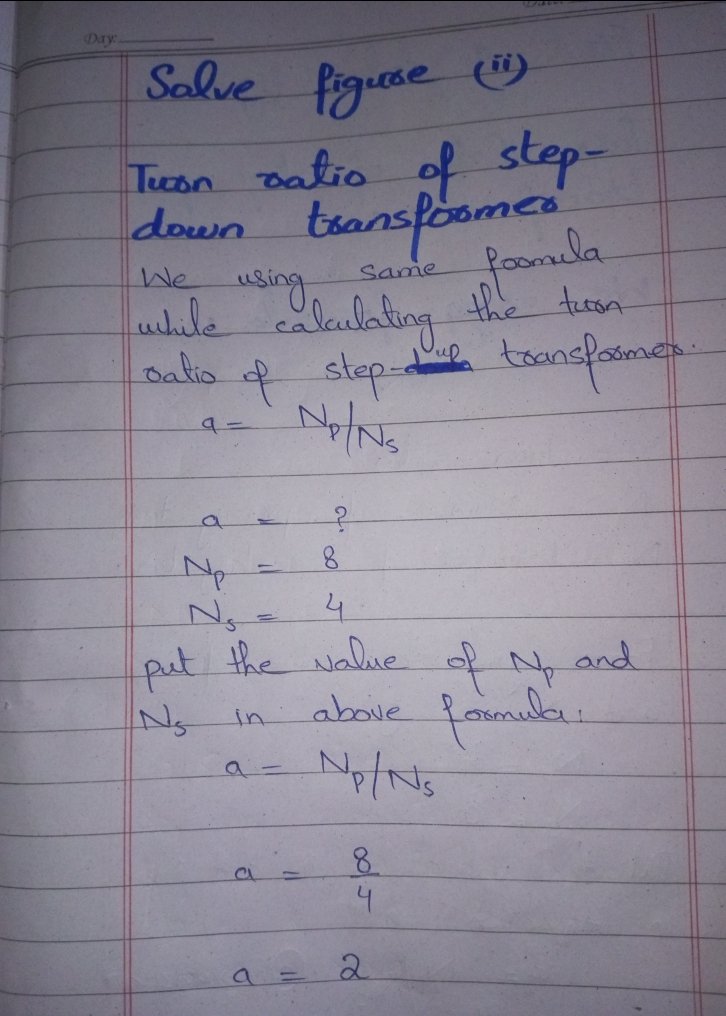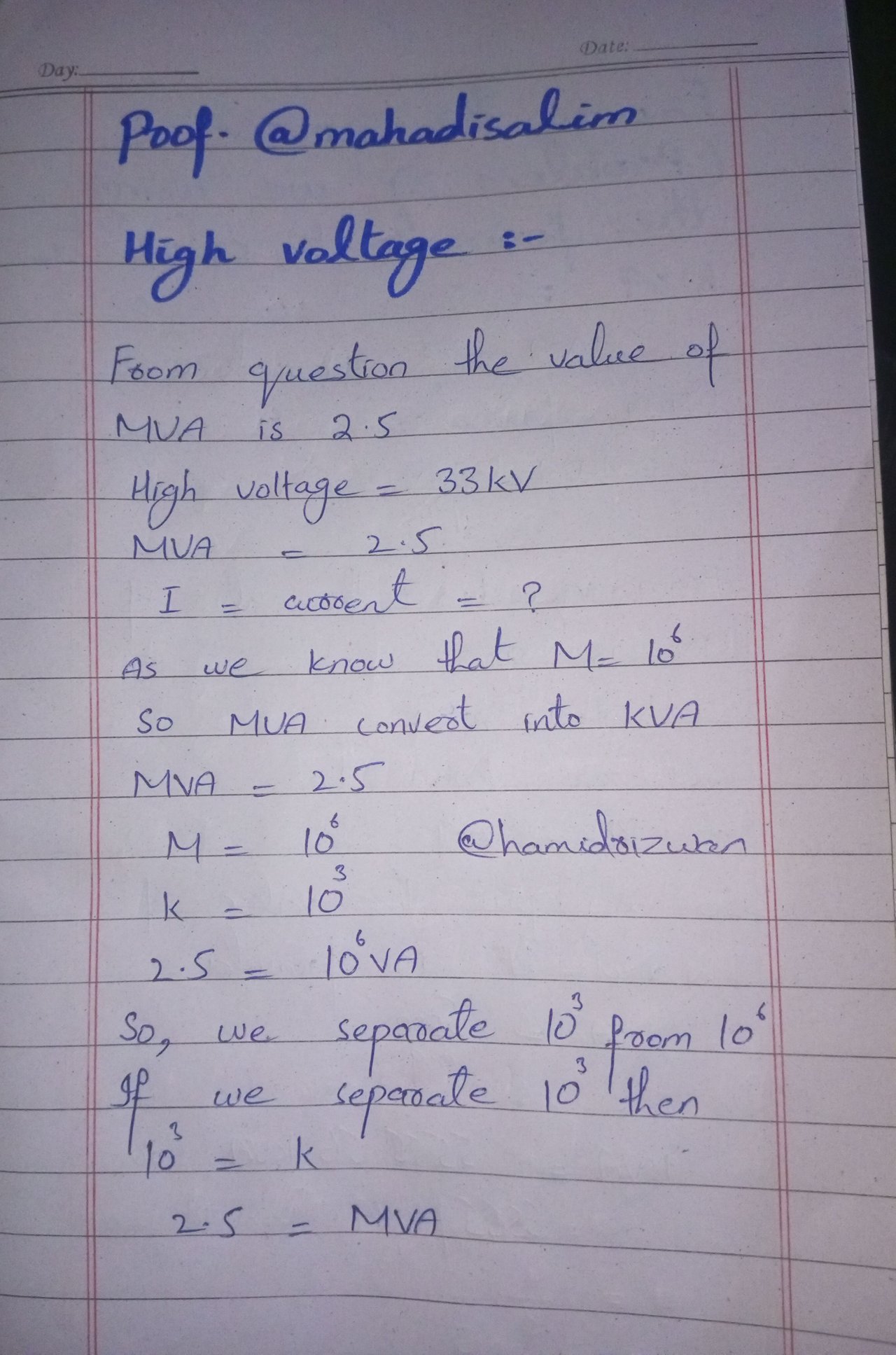"SLC22/WK1: Advanced Electrical Transformers and the Power Factor."
1 comment
 |
|---|
Design by canva app
| Assalamualaikum Friends ♥️ ✨ |
|---|
| How are you? |
|---|
| Welcome on my post ♥️ |
|---|
Professor @mahadisalim, I thank you very much for explaining us about transformers in a very good way. Explained about its various parts and power factors in a very easy way. I felt very happy to participate in this learning course. God willing, I will try my best to participate in all your upcoming courses.

| Name the two transformers from the diagram and explain why? |
|---|
 |
|---|
Diagram is made by me, @hamidrizwan / Pakistan
| Step-up transformer |
|---|
Professor @mahadisalim, I created a new diagram similar to this after looking at your diagram. And which is figure one in the diagram i.e. on the left side. So that's the step-up transformer.
It is called a step-up transformer because it is used to convert a lower voltage to a higher voltage. Step-up transformers are larger in size and have higher ratings.
Power generation companies use step-up transformers and then generate electricity from them. When the electricity generates, it transmits it to the power house through the transmission line.

| Step-down transformer |
|---|
The second figure on the right is that of a step-down transformer. It is called a step-down transformer because it is used to convert high voltage to low voltage.
Step-down transformers are used by power companies to deliver electricity to the consumer's house. These transformers are widely used.

| What is the turn ratio of the two transformers? |
|---|
 |
|---|
| Turn Ratio? |
|---|
The ratio from primary turn to secondary turn is called turn Ratio.
| Firstly I solved figure (i) and find the turn ratio of step-up transformer! |
|---|
We using Formula!
a = Np / Na equation (i)
As we know that,
a = Turn ratio
Np = Number of primary turn
Ns = Number of secondary turn
| From figure the value of Np and Ns is given! |
|---|
Np = 4
Ns = 8
Put the value of Np and Ns in above equation (i)
a = Np/Ns
a = 4 / 8
a = 0.5
| So according to my answer the turn ratio of step-up transformer is 0.5 |
|---|

 |
|---|
| Turn ratio of step-down transformer |
|---|
Using same formula while I calculate the turn ratio of step-up transformer
According to formula
a = Np / Na
a = ?
Np = 8
Ns = 4
Put the value of Np and Ns in above formula
a = Np / Na
a = 8 / 4
a = 2
| From my answer The turn ratio of step-down transformer is 2 |
|---|

| Identify the various parts of a power transformer with a picture and write the function of each part? |
|---|
 |
|---|
Design by canva app
| Conservator tank |
|---|
The first part of a transformer that I am talking about is a conservator tank. It is called a conservator tank because it is shaped like a drum. And oil is stored in it.
The oil is stored in a tank, so it is called a conservator tank. And its main function is to keep reserve oil in it. For example, if a transformer runs out of oil, there is excess oil in it.
| Buchholz relay |
|---|
Among the parts of the transformer, this part has a very important role. It provides protection to the transformer and is also safety device in transformer. For example, if the transformer runs out of oil or has an internal fault, it stops working.
| Radiator |
|---|
The main function of the radiator is to provide cooling to the transformer. When the transformer is under load, its oil heats up. When the oil heats up, it goes into the radiator and then the radiator cools it down.
| Breather |
|---|
Breather consist of silica that removes excess moisture from the air. The transformer takes air from the outside and takes it inside through the breather.
| HT bushing |
|---|
It is a very important part of the transformer. If I talk about it, it is the primary side of the transformer which we called HT bushing.
And in this it is useful for connection and high input voltage given at HT bushing. As you explained by example in course HT bushing of 33KV / 11KV and it proved to us that transformer gave 33 KV input voltage.
| LT bushing |
|---|
It is also an important part of the transformer. And the secondary side of the transformer is called LT bushing.
We learned from the course that in this the transformer is connected to the load.
As you explained to us through an example in the course that LT bushing side of 33KV / 0.415KV and it would be gave low voltage (0.415KV).
| Temperature gauge |
|---|
When the transformer is on load, the meter shows its oil and coil readings. For example, if its coils heat up, it shows up on the meter.
There is a thermostat inside the transformer which shuts down the transformer in case of high temperature.
| What type of transformer is used for your home's electricity? Describe your understanding with pictures? |
|---|

 |
|---|
Now as you asked which transformer is used for your home's electricity, So let me tell you that we live in a village and there is not much load here. The transformer used for our house electricity is a step-down transformer.
And the picture I shared with you is of a transformer right next to our house. I took this picture standing down. From above, I could not make out a picture. And if I made this picture on upper side then Its all parts are clear and visible.
Step-down transformers are used by power companies and deliver electricity to the consumer's house. You will see different parts of it in this picture. Now it has HT bushing, which is the primary side of the transformer.
And as I explained above, what is the function of HT bushing? And its second part, which is its secondary part, is LT bushing. This is also explained by me in parts of the transformer above.
Most of the step-down transformers are widely used.

| Calculate how many KVA transformers will be required for a 5000 KW load? |
|---|
 |
|---|
From the course (Problem 2) we using the formula to calculate KVA
KVA = ?
According to formula
KVA = KW / PF
From question the value of KW is given which is:
KW = 5000
And we know that,
PF (power factor) = 0.9
So, we put the value of KW and PF in formula
KVA = KW / PF
KVA = 5000 / 0.9
KVA = 5555.56 ~ 5555 KVA
So, finally wo need 6000KVA transformers will be required for a 5000 KW load.

| Look at the transformer's nameplate in the picture and find out the following points? |
|---|
| Transformer Name | Energypac |
|---|---|
| Transformer Rating | 2500 KVA |
| Primary Voltage(HV) | 33000 KV |
| Secondary Voltage (LV) | 415V |
| Current(HV) | 43.74 A |
| Current(LV) | 3478.11 A |

| Find the currents in the high voltage (HV) and low voltage (LV) sides of the 33/0.415 kV, 2.5 MVA transformer? |
|---|
 |
|---|
 |
|---|
| Firstly I find the current in high voltage? |
|---|
From the question MVA is 2.5
High voltage = 33KV
Current = I = ?
As we know that M = 10⁶
So I convert MVA into KVA
MVA = 2.5
M = 10⁶
K = 10³
2.5 × 10⁶VA
So, we separate 10³ from 10⁶. If when we separate 10³ then,
= 2.5 × 10³KVA
Then I done ✅ multiplication
= 2500KVA
I-HV ( High voltage )= ?
I - HV = 2500KVA / (√3 × 33KV)
I - HV = 2500KVA / 57.156KV
I done ✅ division
Then finally the answer is 43.74Amp.

 |
|---|
| Secondly, I find the current in low voltage? |
|---|
MVA = 2.5
OR
= 2500KVA
Low voltage = 0.415KV
I = ?
I - LV (low voltage) = 2500KVA / (√3 × 0.415KV)
I = 2500KVA / (1.732 × 0.415KV)
I = 2500KVA / 0.71878KV
Finally the Current for low voltage is I = 3478.12 Amp.

| What do you mean by power factor? What is the power factor value given by the electricity supply company in your country? |
|---|
Before discussing the power factor, let me tell you that the power factor is very important in electrical engineering. Also, the power factor has no unit.
Power Factor = The ratio of active power to apparent power
And let me tell you that the value of power factor is different. In my country Pakistan, the power factor value calculated by the electricity supply companies is between 0.85 and 0.95.
But, there are some power supply companies that have something specific for power factor. It is the essential for industrial and commercial consumer to maintain power factor and avoid penalties on their electricity bills.

| Given the nameplates of the two transformers shown in the figure, write three differences? |
|---|
 |
|---|
Design by canva app
| First Transformer | Second Transformer |
|---|---|
| Impedance is 6.6% | Impedance is 4.01% |
| HT voltage is 33000V | HT voltage is 11000V |
| 2500 KVA | 200 KVA |
| Determine True/False: |
|---|
The name of the oil used in a transformer is pyranol. True ✅
The core loss of the transformer is in the winding. False
The efficiency of the transformer is less than that of other electrical devices. False
The transformer rating is in KW. False
The transformer's insulation test is done with a megger meter. True ✅

| Invite friends |
|---|
@aliraza51214, @suryati1 and @mercybliss
| Best Wishes 😍 Always be happy. |
|---|


Comments